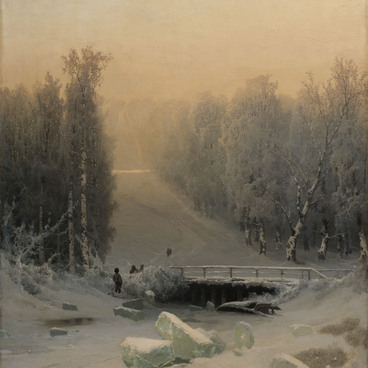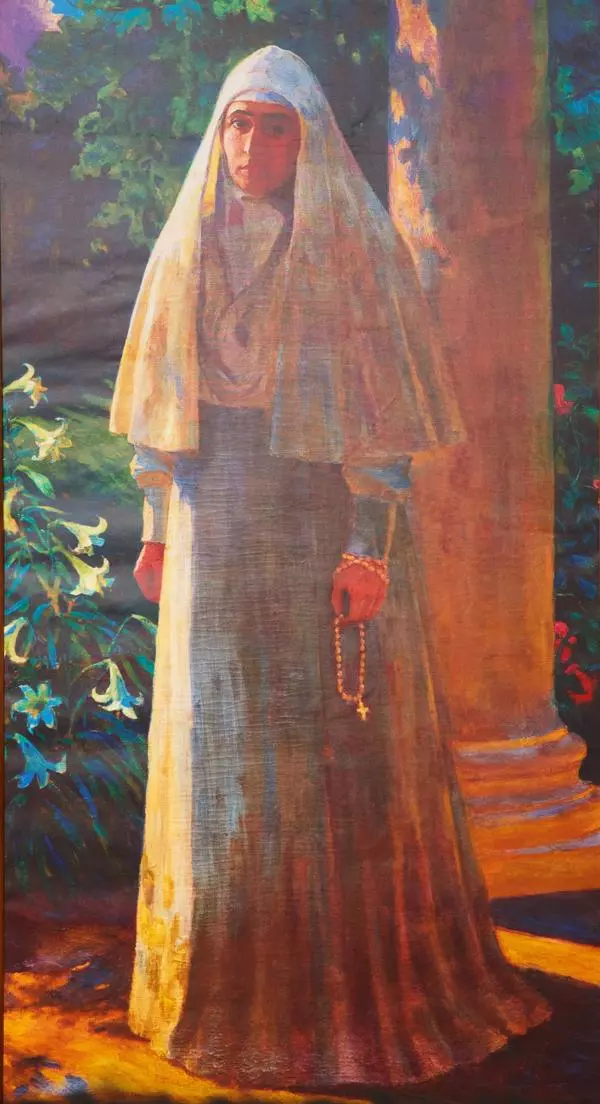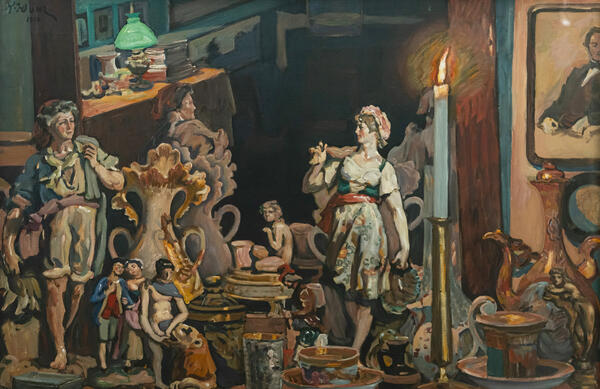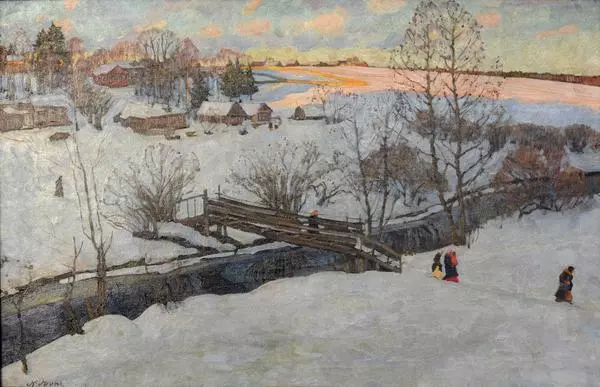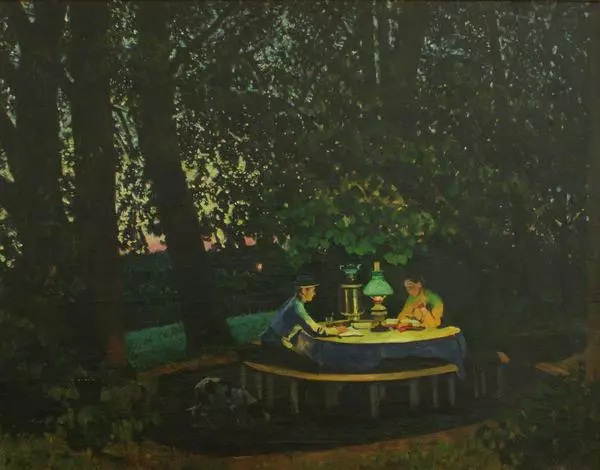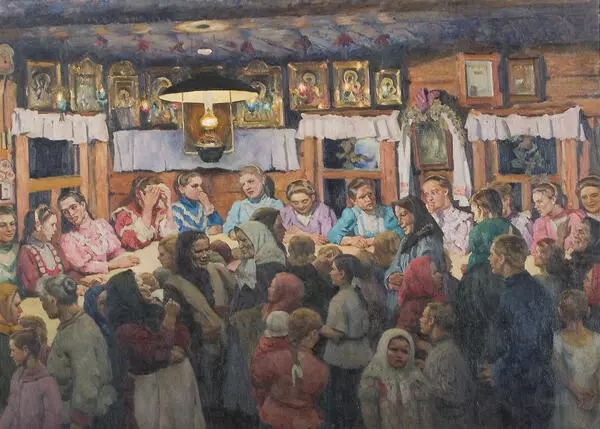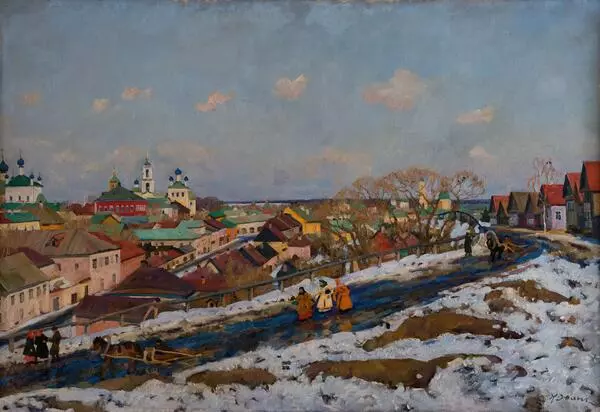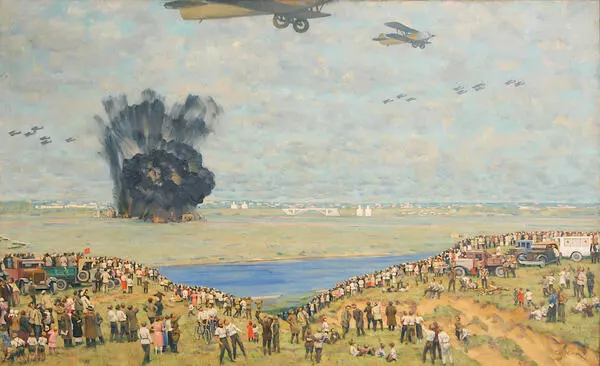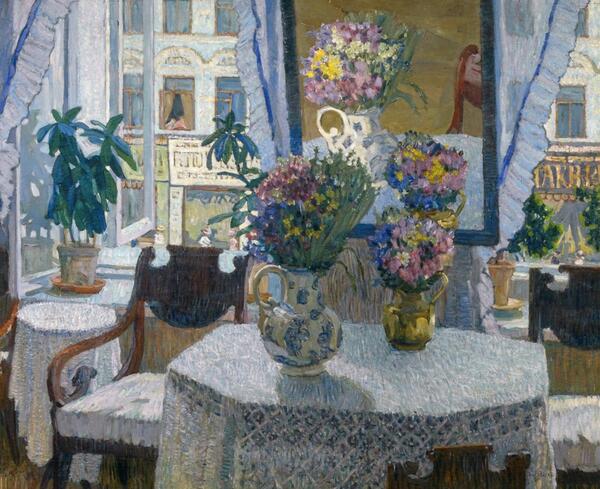Konstantin Fyodorovich Yuon was a painter working in landscape, genre, and portrait art, creator of paintings on historical subjects, set designer. Yuon was born in Moscow in 1875, studied at the Moscow School of Painting, Sculpture and Architecture with Konstantin Savitsky, Konstantin Gorsky, Sergei Miloradovich, Abram Arkhipov, Konstantin Korovin, and Leonid Pasternak, as well as in the workshop of Valentin Serov. Konstantin Fyodorovich taught in his own studio together with the artist Ivan Nikanorovich Dudin. Yuon’s students were, among others, Vera Mukhina and Robert Falk. Konstantin Fyodorovich designed stage decorations for Sergei Diaghilev’s “Russian Seasons” in Paris.
After the revolution, the painter taught at the Vasily Surikov Institute of Fine Arts in Moscow and the USSR Academy of Arts. In the 1940s, Yuon worked as the chief artist of the State Academic Maly Theater, and then served as director of the Research Institute of Theory and History of Fine Arts of the USSR Academy of Arts.
In his works, Yuon turned to the motives of the Russian province, revealing the historical and national originality of its way of life and landscape in a vivid manner of painting, which developed under the influence of impressionism. The artist often painted works on historical, everyday, and industrial themes.
The 1920s painting “The Outgoing Province” was
created in a realistic manner. The researchers note that there is a subtle psychologism
in the work, but with a decorativeness characteristic of Art Nouveau. In the
center of the painting is a table covered with an elegant lace tablecloth, on
which there are flowers, decorative figurines and a mirror. By showing such
attention to detail, the artist seems to be ironic about the desire of
provincial residents to demonstrate their well-being and prosperity. The
painting depicts two women. The gaze of the elderly woman is directed both at
the girl (most likely, her granddaughter) and into the distance. The old woman
looks at her granddaughter with a sad half-smile, clearly realizing that the
girl is waiting for a fate different from her own. The kerchief on the girl’s
head is tied according to the fashion of the twenties. The girl’s gaze is
directed forward into the future.


